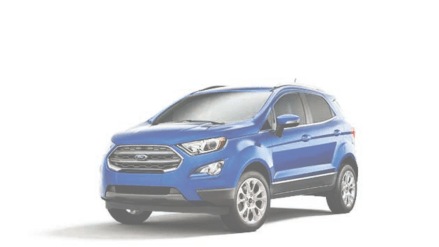After a three-year absence from the Indian market, Ford is plotting a comeback in the world’s fastest-growing top 10 automobile market. But the US automaker’s return journey will be fraught with challenges as the company will navigate a market that is significantly different from the one it departed in 2021.
In any case, its final years in India were difficult. Over its last decade in India, the company accumulated operating losses of over $2 billion, underscoring the strategic challenges it faced in the market.
Today, India is on every global brand’s radar, and Ford cannot afford to ignore this opportunity. And it must adopt a strategy that reflects the new realities of the market. Says Ishan Agarwal, brand director, CashKaro, “To make a successful comeback in India, Ford must strategically combine its global brand strength with a deep understanding of the evolving needs and preferences of Indian consumers. A strong emphasis on customer satisfaction, competitive pricing, cutting-edge technology, and understanding the aspirations of Millennials and Gen Z will be crucial for their success.”
One potential approach would be to focus on the premium segment, where Indian consumers are willing to shell out that extra buck for quality. Models like the Mustang and high-end SUVs could serve as the cornerstone of Ford’s comeback strategy, much like KTM has successfully carved a niche in the premium bike market.
Ford will also need to invest heavily in its electric vehicle (EV) lineup, as the Indian government continues to push for greener alternatives. The company’s current offerings in the EV segment are limited, and developing a robust EV portfolio will be critical for long-term success in India.
This will be a marked shift from its earlier strategy — a strategy that didn’t really serve the brand well. “Ford’s strategic focus on India was insufficient, leading to a gradual decline in sales. This, coupled with leadership changes that resulted in shifting priorities, ultimately led to Ford’s exit from the Indian market,” says Ajimon Francis, managing director of Brand Finance India.
Jitesh Jain, sales head at Autocraft India, notes that Ford did not have the right SUV lineup to compete with models like the Hyundai Creta, a factor that contributed to its dwindling fortune in India. So “taking the right decisions at the right time” will be crucial.
New reality
Look at how the market has transformed. The lower and mid-segments are now dominated by brands that offer high-quality vehicles at competitive prices. Korean automakers, in particular, have set a new benchmark for value, making it difficult for Ford to compete on pricing alone. As Mohit Hira, co-founder of Myriad Communications, and Venture Partner at YourNest Capital Advisors, points out, “Consumer expectations have evolved, with a growing preference for higher-end cars at more affordable prices.”
That apart, India is transitioning from being a services nation to a product-driven economy, with improved manufacturing capabilities, say experts. This shift presents both opportunities and challenges for Ford. On the one hand, the country’s manufacturing prowess offers a conducive environment for producing cars locally, and on the other, re-establishing relationships with dealers and rebuilding brand loyalty will be a long and arduous process. Hira, who was part of the agency that helped build the Ford brand in India, emphasises that a completely fresh approach will be necessary for Ford to regain its foothold in the market.
In all this, Ford could take some valuable lessons from the experiences of global brands that have tried to stage comebacks in India with varying degrees of success. Dockers, the American apparel brand, and Papa John’s, the pizza chain, both struggled to regain their former glory after exiting the Indian market. Dockers, which had once enjoyed a significant market share in the casual wear segment, failed to adapt to the changing fashion landscape in India. Papa John’s, on the other hand, faced stiff competition from established players like Domino’s and Pizza Hut, making it difficult to re-establish itself.
Another brand that experienced a tumultuous journey in India is Onida, once a dominant player in the consumer electronics market. Onida’s inability to keep pace with technological advancements and the influx of international competitors led to its decline. Despite several attempts to revive the brand, Onida has struggled to regain its former market share.
Re-entering any market is difficult, and for Ford, the road to redemption will be long.
